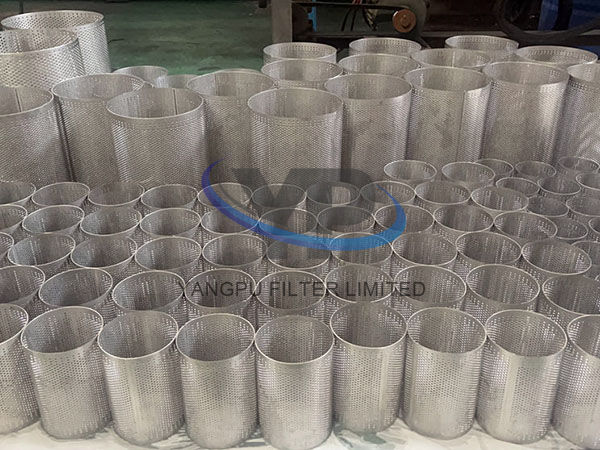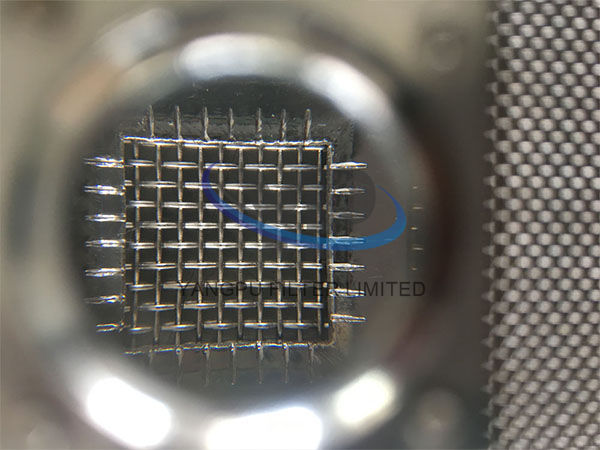What is the relationship between filter size and flow rate?
The relationship between filter size and flow rate in a stainless steel filter system is influenced by multiple factors and can be summarized as follows:
1. Key Definitions
- Filter Size:
- Refers to the physical dimensions of the filter (e.g., diameter, length, or cross-sectional area) and the filtration area (surface area available for fluid passage).
- Often correlated with the filter element’s capacity (e.g., cartridge size, mesh density, or layer thickness).
- Flow Rate:
- The volume of fluid (liquid or gas) passing through the filter per unit time (e.g., L/min, m³/h).
2. Core Relationship: Direct and Inverse Factors
(1) Direct Relationship: Filtration Area vs. Flow Rate
- Larger filter size (e.g., larger cross-sectional area or filtration surface) generally allows for a higher flow rate, assuming other factors are constant.
- Reason: A larger surface area provides more pathways for fluid to pass through, reducing resistance (pressure drop) and enabling faster flow.
- Example: A filter with a 10-inch cartridge (filtration area: ~0.2 m²) may handle 5 L/min, while a 20-inch cartridge (filtration area: ~0.4 m²) with the same mesh size can handle ~10 L/min.
(2) Inverse Relationship: Pressure Drop vs. Flow Rate
- As flow rate increases through a fixed-size filter, pressure drop across the filter also increases due to:
- Fluid friction against the filter medium.
- Accumulation of particulates (over time, causing clogging).
- Smaller filter sizes (restricted flow area) will experience higher pressure drops at the same flow rate, potentially limiting maximum flow or requiring more frequent cleaning/replacement.
3. Influencing Factors
The relationship between filter size and flow rate is also affected by:
(1) Fluid Properties
- Viscosity: Higher viscosity fluids (e.g., oils) require larger filter sizes for the same flow rate to reduce pressure drop.
- Temperature: Warmer fluids are less viscous, allowing higher flow rates through the same filter size.
- Particulate Concentration: Dirty fluids with high solids require larger filters to avoid rapid clogging.
(2) Filter Medium
- Mesh Size/Pore Rating: A finer filter (smaller pores) has more resistance, so a larger physical size may be needed to maintain the same flow rate as a coarser filter.
- Structure: Depth filters (multi-layered) or pleated cartridges increase effective filtration area within the same physical size, enhancing flow capacity.
(3) System Design
- Inlet/Outlet Diameter: Restricted piping or fittings can bottleneck flow, even with a large filter.
- Operating Pressure: Higher system pressure can push fluid through smaller filters at higher rates, but this is limited by the filter’s structural integrity.
4. Practical Design Considerations
(1) Flow Rate Calculation Formula
A simplified approach for incompressible fluids:Q=K×A×ΔP/μ
where:
- Q= Flow rate
- K= Permeability of the filter medium (dependent on pore size and structure)
- A= Filtration area
- ΔP= Pressure drop across the filter
- μ= Fluid viscosity
- Key takeaway: Flow rate is proportional to filtration area and inversely proportional to viscosity and pressure drop.
(2) Industry Standards and Testing
- Many manufacturers provide flow rate vs. pressure drop curves for their filters (e.g., “a 40-mesh stainless steel filter with a 1 m² area can handle 20 m³/h at 1 bar pressure drop”).
- For critical applications (e.g., pharmaceuticals, hydraulics), conduct flow testing under actual fluid conditions to validate performance.
(3) Safety Margins
- Avoid operating at the maximum flow rate of a filter:
- Leave a 20–30% margin to account for particulate buildup (which increases pressure drop over time).
- Use larger filters for systems with fluctuating flow rates or long operational cycles.
5. Example Scenarios
| Application | Filter Type | Typical Flow Rate Range | Key Factor |
|---|
| Water Filtration (Home) | 10-inch cartridge | 1–5 L/min | Low viscosity, moderate solids |
| Industrial Oil Filtration | Pleated stainless steel | 50–200 L/min | High viscosity, fine filtration |
| Gas Filtration | Stainless steel mesh | 500–2000 m³/h | Low density, high flow |
6. Summary
- Larger filter size (filtration area) generally supports higher flow rates under the same conditions.
- Always balance filter size with:
- Fluid properties (viscosity, contaminants).
- System pressure and allowable pressure drop.
- Maintenance requirements (e.g., how often the filter can be cleaned/replaced).
- Consult manufacturer specifications or perform flow testing to optimize filter size for your application.





